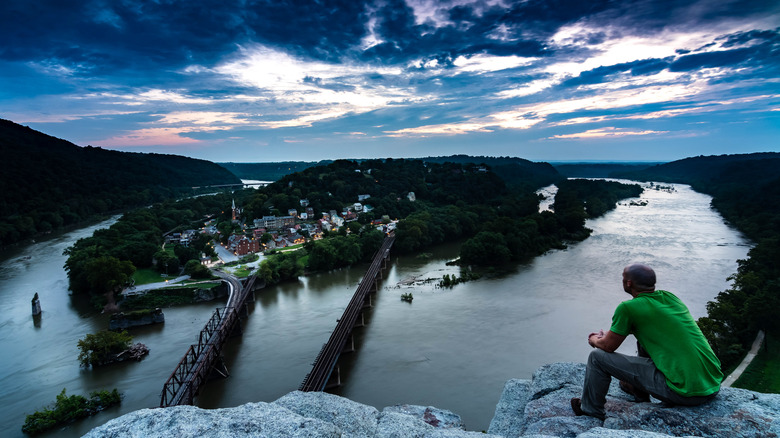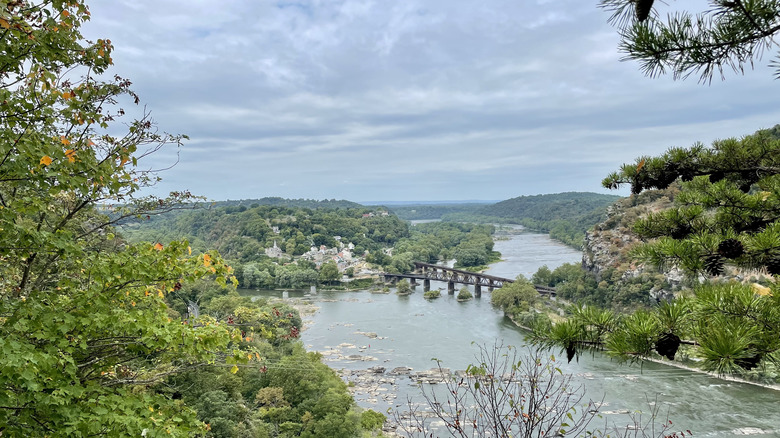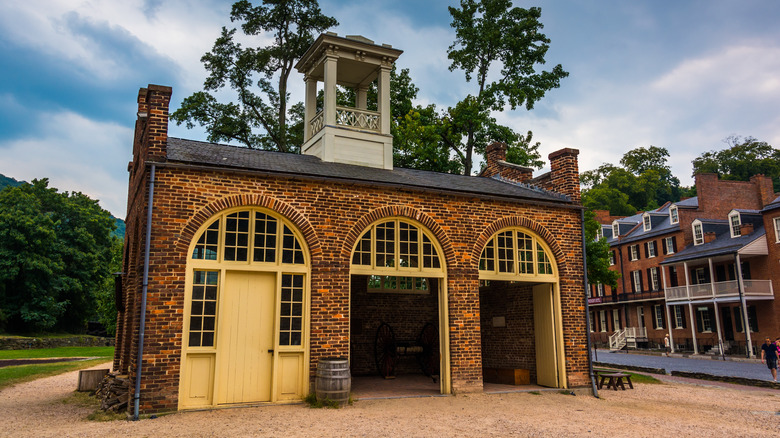This National Historical Park Is A Thrilling Destination For Civil War Buffs
Hiking along the banks of the beautiful Shenandoah River or walking the streets of a historic district that has been restored to look like it's still 1863 alone would be worth the trip to Harpers Ferry National Historical Park. However, most visitors aren't looking to enjoy the scenery. Rather, they hope to catch a glimpse into America's past and walk in the places where some of its most important historical figures once walked more than 160 years ago.
The history of Harpers Ferry mirrors the history of the United States itself. The park offers an opportunity to see the places where armies camped and key battles were fought. The Confederates and the Union sometimes controlled the town itself, and the regular fighting left its mark on the settlement and the land surrounding it. For those who have never heard the stories of iconic American figures like John Brown, Coralie Franklin Cook, and Fredrick Douglas, there can be no better introduction than through the historical reenactments and museum exhibitions at the park, offering a look into the human side of the past.
Explore Civil War history at Harpers Ferry National Historical Park
One spot history buffs won't want to miss is the United States Arsenal Ruins. While all that remains today are a few stone foundations, these were once two enormous arsenal buildings that held tens of thousands of weapons, some of which were spirited away to the Southern states before the Civil War began. Later, both buildings were burned to the ground by Union soldiers to ensure that the rest of the weapons could not be used against them. While today it just looks like an open field, students of Civil War history will also enjoy walking through Bolivar Heights. This area was both a campsite for thousands of soldiers and the site of deadly battles, including one of the Union's worst defeats.
Hikers can look down on Harpers Ferry from above by climbing Loudoun Heights. The spot has a rich history, too, as this high vantage point made it a valuable location. Just be warned, this hike can be a challenging trek. Make sure to take precautions, especially if hiking alone. While not as high, Camp Hill offers scenic views and a fascinating story. True to its name, this area was a regular campsite for soldiers, many of whom died and were buried there. After the war, it had a more positive purpose: it became a school for Black Americans. Among its many graduates was civil rights champion and women's rights activist Coralie Franklin Cook.
Learn John Brown's story
While there were many battles during the Civil War at Harpers Ferry, the most famous came just beforehand – and many believe it was the catalyst that pushed an already divided nation into war. It is the spot where American folk hero John Brown and 21 other abolitionists attacked, trying to capture enough weapons to distribute to people who had been enslaved in the region so that they might free themselves. While Brown's uprising failed and he was hanged, some view it as the spark that ignited the Civil War, which ultimately led to the end of slavery as an institution in the United States.
Visitors to Harpers Ferry can see the ruins of the arsenal that John Brown hoped to raid, as well as John Brown's Fort on Camp Hill, where he and his men were finally overwhelmed by U.S. Marines. They can also see the outside of Anthony Hall, which, in addition to being a military building during the Civil War, is the site where American Civil Rights leader Fredrick Douglas eulogized John Brown 22 years after his death. Looking to experience more history? Check out the oldest amusement park in the United States.


